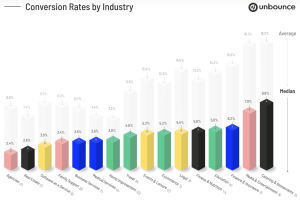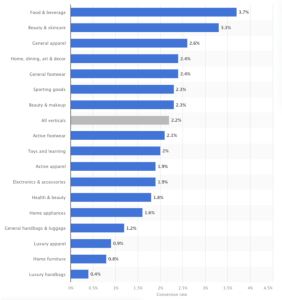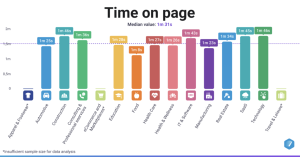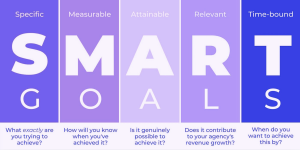Have you ever wondered why some websites seem to get everything right? They draw people in and almost magically turn them into customers. But then, there are other websites that struggle to get even a handful of clicks.
Let’s talk about a common situation: You and your team are putting in the work, trying one thing after another, but it feels like you’re not achieving your desired results. All that time, effort, and money are laying the groundwork for success—your conversion goals are closer than you think. You only need to learn the right approach. I promise you those results are within reach after that.
Getting those clicks and conversions isn’t about random attempts. It’s about smart strategies—understanding what your visitors really need and testing ways to meet those needs better
By focusing on adding real value and experimenting thoughtfully, you’ll start seeing the changes you’ve been hoping for.
In this article, we will explore what Conversion Rate Optimization (CRO) means and walk through practical tips on how to do it right. Let’s get your site working for you!

What Makes Conversion Rate Optimization Important?
CRO is a focused approach in digital marketing designed to transform visitors into active participants on your site—whether that means buying a product, signing up for a newsletter, or filling out a form.
When your website is fine-tuned for conversions, not only does your business grow rapidly, but you also make the best out of your marketing budget.
Additionally, a high conversion rate indicates that visitors find what they are looking for when they visit your website. Usability, attractiveness, and engaging content also play crucial roles.
Remember this: it needs to be EASY for your customers to find what they are looking for on your website.
Great content but poor usability = low conversion rates.
Poor content but great usability = low conversion rates.
Great content and great usability = high conversion rates.
However, no worries because a low conversion rate suggests there’s substantial room for improvement.
Common issues that affect usability
- Slow loading times
- Lengthy forms (forms with too many questions)
- Autoplay videos
- Lots of pop-up windows
- Broken links
- Low-quality images
- Device compatibility problems
- Irrelevant or poorly written content
- Complicated navigation
So, how do you start fixing your conversion rate?
The first step is understanding where you stand by calculating your current conversion rate.
Here’s a simple formula:
Conversion Rate (%) = (Number of Conversions / Total Visitors) x 100
This calculation lets you identify what’s effective and where your site needs improvement. You can track conversion rates for specific actions or overall performance. Additionally, this insight directs your efforts to optimize areas that will encourage more visitor engagement and action.
Moreover, understanding what a “good” conversion rate looks like is also key.
While this can vary depending on your industry and goals, the graph below from Unbounce’s Conversion Benchmark Report illustrates the comparison of B2B and B2C landing page conversion rates across 16 industries. This visual representation helps to contextualize the performance standards within different sectors.

By referencing this graph, you can assess your conversion rates compared to industry benchmarks and pinpoint areas for improvement.
Optimizing your site for conversions may require dedication and meticulous work, but the rewards are substantial.
Below, we’ll explore some of the best CRO practices to enhance your website’s conversion rates and maximize your marketing efforts, ensuring your website performs at its peak.
Conversion Rate Optimization Best Practices
1. Make Data-Driven Decisions
Relying solely on instinct to identify issues on your website can be costly.
It’s essential to pivot to data-driven strategies using tools like Google Analytics, which provide actionable, real-time insights.
These tools help track critical metrics such as visitor behavior, conversion rates, and traffic sources. Understanding these aspects allows you to make informed decisions, enhancing your website’s performance and directly impacting your bottom line.
Embracing a data-driven approach minimizes financial risks and ensures that strategic adjustments are based on reliable data. Making informed decisions begins with looking closely at the existing data.
Some key metrics to track include:
Bounce rate
The bounce rate indicates whether your website’s content and usability are engaging enough to retain visitors or if it needs improvement.
A high bounce rate, especially over 56%, signals that visitors may not be finding what they expect or need. According to SEMrush, a bounce rate between 26% and 40% is generally seen as “ideal.”
To check your bounce rate in Google Analytics 4 (GA4), start by signing in to Google Analytics and selecting the appropriate GA4 property.
Navigate to Reports > Engagement > Overview.
NOTE: In GA4, traditional bounce rate is not the primary focus; instead, GA4 uses “Engagement Rate,” “Engaged Sessions,” and “Average Engagement Time per Session” to provide a comprehensive view of user interaction.
If you need to find specific metrics or a traditional bounce rate equivalent, you can create a custom report or use the “Explore” tool in GA4 by going to Explore, starting a new exploration, and adding relevant dimensions and metrics to build a custom report. Once set up, analyze the data to understand user behavior and engagement on your website.
Cost per conversion
This metric is about the effectiveness of your conversion strategies. Monitoring the cost per conversion allows you to identify weak spots in your conversion process and fine-tune your conversion funnel for better performance.
A higher cost per conversion suggests inefficiencies in your process, signaling a need for adjustments. Tracking this cost helps you optimize your website and ad spend efficiently.
Knowing how much you’re spending on each conversion can help you better manage your budget and boost your return on investment (ROI).
Regularly checking your cost per conversion also enables you to streamline your conversion paths.
Utilize A/B testing to pinpoint the most effective strategies and continually refine your Conversion Rate Optimization (CRO) efforts. This not only enhances outcomes but also helps cut down unnecessary expenses and maximize your marketing dollars.
Conversion rate
The conversion rate is the percentage of visitors who complete a desired action, such as making a purchase or filling out a form.
A high conversion rate indicates effective marketing and a well-designed website. To check your conversion rate in GA4, navigate to Reports > Acquisition > Overview and look for the conversion rate metrics.
Improving this rate involves optimizing your landing pages, ensuring clear calls-to-action (CTAs), and providing a seamless user experience.
Check out this graph from Statista, where you can see the average conversion rate by industry.

Average session duration
Average session duration measures how long visitors stay on your site.
Longer session durations suggest that visitors are engaged with your content.
To find this metric, go to Reports > Engagement > Overview in GA4.
Enhancing session duration can be achieved by creating engaging, valuable content, improving site navigation, and reducing page load times.
Here is a graph from Databox with the average time on page reported by different industries so you can have an idea of where yours stands.

Pages per session
Pages per session indicate the average number of pages viewed during a visit.
A higher number signifies that visitors find your site useful and are exploring multiple pages.
This metric can be found in Reports > Engagement > Overview in GA4.
To increase pages per session, interlink related content, use engaging CTAs, and ensure easy navigation.
User retention
User retention measures how often visitors return to your site.
High retention rates indicate that your site provides ongoing value to users. They keep coming back!
This metric can be tracked over time to see how well your site retains visitors.
In GA4, navigate to Reports > Retention to view user retention data. Improving retention involves offering regular updates and valuable content and engaging with your audience through email marketing and social media.
Furthermore, tracking and optimizing these key metrics will help you make informed decisions and improve your website’s performance, ultimately enhancing user experience and achieving your business goals.
By analyzing these metrics, you can:
Ensure the relevance of top pages
Check if your top pages address your visitors’ needs and answer key questions immediately. This can help reduce bounce rates and improve user satisfaction.
Experiment with content
Experiment with different headlines, keywords, and calls to action to find what resonates best with your audience. Use A/B testing to identify the most effective variations.
Enhance visual appeal
Enhance your content with more visuals, such as images, infographics, and step-by-step guides. Visual content can increase engagement and make your site more appealing.
Expand and detail articles
Expand pages and articles to be more detailed and informative. Comprehensive content can improve SEO and keep visitors engaged longer.
Pro tip: ensure all your pages have at least 500 words.
Use engaging videos
Include videos to maintain visitor engagement, but ensure they do not autoplay unless they are used as a motion background. Autoplay videos can sometimes disrupt the user experience.
Improve user experience
Optimize page load times and site navigation to provide a smooth user experience. Faster load times and easy navigation can reduce bounce rates and increase pages per session.
Internal linking
Add more internal links to keep visitors browsing your site longer. Internal linking can help improve SEO and guide users to additional relevant content.
Mobile optimization
Check Page Speed Insights and ensure your website is optimized for mobile devices. Mobile optimization is crucial as more users access websites from their smartphones, and a poor mobile experience can increase bounce rates.
By focusing on these areas, you can optimize your website to better meet the needs of your visitors, improve user engagement, and ultimately increase conversion rates.
Ultimately, the goal is to make your website more inviting and valuable for everyone who visits.
2. Know Your Competitors
Studying your top competitors’ websites and marketing tactics can provide you with actionable information about what appeals to your audience. It’s not about copying what they do but uncovering the reasons behind their success.
Take the time to analyze their strategies—look at their content, promotions, and user engagement. What messages are they sending that resonate with customers? How are they structuring their offers? Observe these elements closely.
Once you understand what attracts and engages a similar audience, think about how you can incorporate similar strategies into your brand’s unique context.
Consequently, this approach allows you to make strategic, informed updates to your site, ensuring that you not only meet but exceed your competitors’ expectations.
This way, you can carve out your own space in the market while learning from those around you.
To effectively learn from your competitors’ successes, focus on these three critical aspects:
Content audit
Regular content audits are essential for maximizing the effectiveness of your content marketing efforts.
With most companies allocating 25-30% of their budget to content marketing, it’s crucial to ensure that your investment is yielding tangible results.
Are you getting the most out of your content marketing budget? It’s time to take a deeper look at your content’s performance and find ways to refine your strategy.
To start, conduct a content audit of your material and your competitors’.
Begin by reviewing their blog content to gauge what captures their audience’s interest. This comparison will not only reveal content gaps but also highlight opportunities for you to capitalize on.
Here’s how to conduct a thorough content audit:
Organize your content
List all your content pieces in a spreadsheet for easy analysis. The easiest way to do this is by looking at your website’s sitemap. If you have one, you can access it by typing www.yourwebsite.com/sitemap.xml
Review and revise
Identify and remove any duplicate or outdated content from your collection.
Analyze competitor content
Compile a similar list of your competitor’s content to understand their strategies.
Spot the differences
Compare both lists to identify content gaps and missed opportunities. This will help you devise strategies that fill these gaps and more effectively meet your audience’s needs.
By systematically assessing and updating your content, you can enhance your content strategy and ensure your budget delivers optimal results.
SEO audit
Effective SEO can deliver a significant return on investment and is the strategy with the highest conversion rate among various digital marketing tactics, according to HubSpot.
Start with a thorough SEO audit using advanced tools like Ahrefs and SEMrush. These tools provide a comprehensive view of keyword strategies and SEO practices, helping you gain valuable insights to boost your SEO performance.
Here’s how to conduct an effective SEO audit:
Dive into keyword analysis
Leverage Google Ads to identify high-performing keywords and analyze the competitive landscape for these terms.
Deepen your competitive analysis
Use tools like Ahrefs and SEMrush to examine your competitors’ SEO tactics, including their on-page optimization, content quality, and backlink profiles, more thoroughly.
Apply insights
Incorporate these insights into your own SEO strategy, filling any gaps and enhancing tactics that are proven to work.
By routinely auditing your SEO strategy and improving successful practices from your competitors, you can enhance your visibility and increase your ROI effectively.
Social media audit
As of 2024, there are over 6 billion people using social media around the world. This makes social networks a vital place to attract customers. Today, you don’t need complex tools to understand what people like.
Just look at what they’re saying and doing on social media.
Here’s an easy way to see what works for your competitors on social media:
- Create a simple spreadsheet: Make a section for each of the top three competitors.
- List their profiles: Write down all the social media platforms where they are active.
- Check how often they post: Note how frequently they update their profiles.
- Look at their format: Observe the kind of content format they use (video, carousels, or single images).
- Find top posts: Pick 5-10 posts that got a lot of likes, shares, or comments on each account.
- Analyze the best posts: Think about why people liked these posts—was it because of the hook, the timing, the way they were written, or the type of content?
By understanding what attracts people to your competitors’ social media, you can better plan your own content to connect with your audience. This might even spark new ideas for your blog or social media strategy.
3. Define Clear Goals
Setting clear goals is not just helpful; it’s essential for success!
When you don’t know where you’re going, any route works.
Research shows that people who define their goals are 42% more likely to achieve them. So, before you start making changes to your website, it’s crucial to set specific, measurable targets.
Instead of vaguely aiming for “more traffic,” specify how much traffic you want to increase—let’s say by 30% within the next six months.
Adopt the SMART goals framework to ensure your objectives are Specific, Measurable, Achievable, Relevant, and Time-bound.

Create both short-term and long-term goals. For example, determine what you aim to achieve in the next six months and then set a vision for where you want to be in a year.
What is your main business objective? Develop a SMART strategy to achieve it, and break this down into manageable steps.
By setting a six-month target, you can track your progress and adjust your strategies as needed. This structured approach not only keeps you focused but also significantly increases your chances of success.
4. Know Your Users
Getting to know your customers is key to success.
Yet, it’s surprising that 42% of companies don’t really pay attention to what their customers need.
People don’t buy products or services; people buy results.
This means they buy what they can achieve with your product or service. For example, they don’t buy a weight loss program; they buy the idea of having their dream body.
You need to figure out what your customers want to achieve. That’s the goal.
Begin by creating profiles for different kinds of visitors—these are called buyer personas. Think about what these visitors like and what they’re looking for.
Then, use what you’ve learned to make your website and content more appealing to them.
This way, you can better meet their specific needs, making your website more effective and your business more successful.
5. Run Tests
To truly enhance your website’s effectiveness, it’s essential to understand two powerful testing strategies: A/B testing and multivariate testing. These methods allow you to compare different versions of your website to see what works best:
A/B testing
Currently, 77% of businesses use this technique, and if you aren’t one of them, you might be missing out.
A/B testing, also known as split testing, lets you compare two variables to see which performs better.
You can test different calls to action, headlines, content, and images. The insights gained from these tests are invaluable for optimizing your website and improving user experience.
Multivariate testing
Think of multivariate testing as the ultimate mix-and-match experiment.
It helps you understand how different elements interact and influence user behavior.
By simultaneously using both A/B and multivariate testing, you can discover the most effective combinations and transform your website into a conversion powerhouse.
Both testing methods provide valuable insights that can help you fine-tune your website to better meet the needs of your visitors, ultimately leading to improved user engagement and increased conversions.
Conclusion
Conversion Rate Optimization (CRO) is a powerful, long-term strategy designed to enhance your website’s effectiveness and drive revenue growth.
While successful CRO isn’t instantaneous, it’s important to remember that seeing results does take time—typically a few weeks and sometimes longer for sites with lower traffic volumes. Nonetheless, don’t be discouraged; this journey is both achievable and rewarding.
At its core, CRO is about deeply understanding your audience. By identifying their needs and behaviors, you can uncover areas for improvement on your site and implement targeted strategies to boost performance.
In addition, this focused approach not only enhances your site’s ability to achieve desired outcomes but also sets you apart from the competition, positioning your business as a leader in your industry.
Moreover, it’s essential to remember that achieving success with CRO involves patience and keeping your audience’s needs at the forefront of your efforts. A well-crafted campaign that includes continuous testing, customer insights, and strategic adjustments will elevate your position on the success ladder, ensuring sustainable growth and a robust online presence.
I’ve been there, too, facing the challenges of improving conversion rates. But with the right guidance and determination, it’s entirely possible to see significant improvements. The data is EVERYTHING.
You are not alone in this, and it’s not your fault if things haven’t worked out perfectly so far. Every successful business has faced similar hurdles and overcome them through persistence and learning.
If you’re looking to optimize your website’s conversion rates and achieve substantial business outcomes, our team is here to guide you. We specialize in creating and implementing tailored CRO strategies that resonate with your business objectives and market demands.
Ready to enhance your website’s effectiveness?
Schedule a free consultation with us here.
We’ll discuss how we can assist you in refining your CRO tactics and achieving your business goals.
Let’s turn your challenges into opportunities and drive your business toward greater success together.








